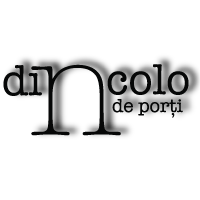Maria Rădan-Papasima
La o privire mai atentă dincolo de porțile locuitorilor din zona Bran-Moieciu, se pot observa mici grădini de legume, aflate în curțile caselor, dar pe alocuri și sus de tot, pe versanții cu fânețe și odăi. De multe ori, aceste parcele sunt îngrădite, semn că în gospodăria respectivă există și animale care lăsate libere prin ogradă ar putea pune recolta în primejdie.
Deși vorbim despre o zonă geografică destul de restrânsă ca suprafață, diferențele de altitudine dintre satele care alcătuiesc comunele Bran, Moieciu și Fundata, determină unele variații în tipul de recolte care se obțin. La Moieciu de Sus se cultivă ceapă, morcovi, țelină, fasole, salată, pătrunjel, mărar, plante furajere, dar mai puțin castraveți sau roșii. În Predeluț și în Sohodol, cresc și castraveți, iar roșiile doar în solar. Și solul are proprietăți diferite, astfel încât la Sohodol cartofii nu prea se fac, pentru că, “e mană, e un fel de mană care distruge tot”. (Ion Cherioiu, Sohodol) În satul Măgura însă, familia Blaj obține în fiecare an o recoltă bogată de cartofi. Deși localitatea se află la o altitudine de 1080 de m, cu gospodării împrăștiate pe muchii și văi abrupte, ce alcătuiesc un peisaj care la prima vedere nu ar fi asociat cu cultura cartofului, familia Blaj reușește să cultive suficienți cartofi încât să nu mai fie nevoie să cumpere din comerț. Însămânțarea începe prin aprilie-mai, după ce trece înghețul:
“Primăvara se ară terenul, avem un plug pe care îl folosim și la scos. La arat folosim calul, îl ară întâi de-a latul ca să afâneze solul. După aceea vine cu… tot așa are un plug cu trei capete, trei pluguri mai mici, cu care se fac rândurile. Prima dată vine cu un singur plug, apoi vine desenul, că practic desenează, să te ghidezi după ele. Apoi vine fiecare, cu găleata în mână, fain-frumos, de cartofi, și la distanță de un picior se plantează cartofii. Cam 30-40 de centimetri. Acum din recolta de cartofi, mergem acasă și sortăm. Sămânța trebuie să fie curată, nestricată, să n-aibă ciupercă pe ea. Cea care e stricată o dăm la porci, ce e mare păstrăm pentru noi, iar ce e mică, pentru că sămânța nu se pune mare, cât se poate de mică, dar să fie sănătoasă.” (Andreea Blaj, Măgura)
Pentru a obține cartofi de calitate, aceștia trebuie apărați de soare, prin mușuroire.
“În etapa a doua se mușuroiește, așa zicem noi, aduce rândul roata. De ce se mușuroiește? Cartoful crește, crește și iese afară, și dacă iese la soare se iuțește și se înverzește. Nu mai sunt buni de mâncare, că te doare și capul de la ei, și stomacul. Deci trebuie să-i pui pământ deasupra, să-i faci ca un mușuroi așa. Apoi, se lasă toată vara în pământ așa.” (Andreea Blaj, Măgura)
Deoarece fiecare soi de cartof reacționează diferit la condițiile climatice, familia Blaj plantează mai multe soiuri, crescându-și astfel șansele de a avea o recoltă la finalul sezonului: “… și românești și olandezi, și mov și roz, unii franzeluță, alții roz rotunzi… Dar tot culegi ceva, când vine iarna ai ce să pui la beci.”
Legumicultura este o activitate secundară, de care localnicii din zona Bran-Moieciu se ocupă în măsura în care reușesc să se îngrijească mai întâi de animale și de fân, așa cum povestește Mariana Zichil din Predeluț “anul ăsta nici n-am putut să mă ocup așa bine de ea, că dacă avem animăluțe și avem fân și așa, nu pot să alerg în toate părțile”. Într-un an ploios, cum a fost acesta, uscarea fânului a durat mai mult, oamenii făcând multe eforturi să-l risipească de câte ori vremea se îndrepta și să-l strângă din nou la primele semne de ploaie.
Grădinile fiind mici și puțin productive, nu reușesc niciodată să acopere necesarul de legume al unei gospodării, însă oferă localnicilor satisfacția de a consuma zarzavaturi pe care le consideră mai sănătoase. Atât doamna Zichil din Predeluț, cât și familia Blaj au subliniat că nu stropesc culturile, buruienile sunt scoase cu sapa, gândacii de colorado sunt culeși cu mâna iar terenul este tratat cu îngrășământ natural.
Controlul pe care îl au asupra calității legumelor și munca investită în producerea lor, conferă o valoare acestor recolte care nu poate fi cuantificată în termeni financiari. Plecată trei luni la lucru în Germaia și nemulțumită de oferta din supermarketurile locale, Andreea a luat cu ea și un sac de cartofi de acasă, de la Măgura…


















